Pinhole Zone Plate Lens for Ultrasound Focusing
Abstract
:1. Introduction
2. Materials and Methods
3. Results
4. Conclusions
Acknowledgments
Author Contributions
Conflicts of Interest
References
- Kipp, L.; Skibowski, M.; Johnson, R.L.; Berndt, R.; Adelung, R.; Harm, S.; Seeman, R. Sharper images by focusing soft X-rays with photon sieves. Nature 2001, 414, 184–188. [Google Scholar] [CrossRef] [PubMed]
- Zhou, L.; Kriegsmann, G.A. Complete transmission through a periodically perforated rigid slab. J. Acoust. Soc. Am. 2007, 121, 3288–3299. [Google Scholar] [CrossRef] [PubMed]
- Christensen, J.; Martin-Moreno, L.; Garcia-Vidal, F.J. Theory of resonant transmission through subwavelength apertures. Phys. Rev. Lett. 2008, 101, 014301–014304. [Google Scholar] [CrossRef] [PubMed]
- Lu, M.; Liu, X.; Feng, L.; Li, J.; Huang, C.; Chen, Y.; Zhu, Y.; Zhu, S.; Ming, N. Extraordinary acoustic transmission through a 1D grating with very narrow apertures. Phys. Rev. Lett. 2007, 99, 174301–174304. [Google Scholar] [CrossRef] [PubMed]
- Hou, B.; Mei, J.; Ke, M.; Wen, W.; Liu, Z.; Shi, J.; Sheng, P. Tuning Fabry-Perot resonances via diffraction evanescent waves. Phys. Rev. B 2007, 76, 054303–054308. [Google Scholar] [CrossRef]
- Estrada, H.; Candelas, P.; Uris, A.; Belmar, F.; García de Abajo, F.J.; Meseguer, F. Extraordinary sound screening in perforated plates. Phys. Rev. Lett. 2008, 101, 084302–084305. [Google Scholar] [CrossRef] [PubMed]
- Estrada, H.; García de Abajo, F.J.; Candelas, P.; Uris, A.; Belmar, F.; Meseguer, F. Angle-dependent ultrasonic transmission through plates with subwavelength hole arrays. Phys. Rev. Lett. 2009, 102, 144301–144304. [Google Scholar] [CrossRef] [PubMed]
- Christensen, J.; Fernandez-Dominguez, A.I.; de Leon-Perez, F.; Martin-Moreno, L.; Garcia-Vidal, J. Collimation of sound assisted by acoustic surface waves. Nat. Phys. 2007, 3, 851–852. [Google Scholar] [CrossRef]
- Mei, J.; Hou, B.; Ke, M.; Peng, S.; Jia, H.; Liu, Z.; Shi, J.; Wen, W.; Sheng, P. Acoustic transmission through a bull’s eye structure. Appl. Phys. Lett. 2008, 92, 124106–124108. [Google Scholar] [CrossRef]
- Zhou, Y.; Lu, M.; Feng, L.; Ni, X.; Chen, Y.; Zhu, Y.; Zhu, S.; Ming, N. Acoustic surface evanescent wave and its dominant contribution to extraordinary acoustic transmission and collimation of sound. Phys. Rev. Lett. 2010, 104, 164301–164304. [Google Scholar] [CrossRef] [PubMed]
- Christensen, J.; Martin-Moreno, L.; Garcia-Vidal, F.J. Enhanced acoustical transmission and beaming effect through a single aperture. Phys. Rev. B 2010, 81, 174104–174109. [Google Scholar] [CrossRef]
- Li, Y.; Liang, B.; Xu, T.; Zhu, X.F.; Zou, X.Y.; Cheng, J.C. Acoustic focusing by coiling up space. Appl. Phys. Lett. 2012, 101, 233508–233511. [Google Scholar] [CrossRef]
- Ye, Y.; Ke, M.; Li, C.; Wang, T.; Qui, C.; Liu, Z. Acoustic lens: A thin plate with quasi-periodic array of holes. Solid State Commun. 2014, 185, 35–40. [Google Scholar] [CrossRef]
- Su, H.; Zhou, X.; Xu, X.; Hu, G. Experimental study on acoustic subwavelength imaging of holey-structured metamaterials by resonant tunnelling. J. Acoust. Soc. Am. 2014, 135, 1686–1691. [Google Scholar] [CrossRef] [PubMed]
- Peng, P.; Xiao, B.; Wu, Y. Flat acoustic lens by acoustic grating with curled slits. Phys. Lett. A 2014, 378, 3389–3392. [Google Scholar] [CrossRef]
- Gomez-Lozano, V.; Candelas, P.; Belmar, F.; Rubio, C.; Uris, A. Ultrasonic lens based on a subwavelength slit surrounded by grooves. Sensors 2014, 14, 8821–8828. [Google Scholar] [CrossRef] [PubMed]
- Molerón, M.; Serra-Garcia, M.; Daraio, C. Acoustic Fresnel lenses with extraordinary transmission. Appl. Phys. Lett. 2014, 105, 114109. [Google Scholar] [CrossRef]
- Li, Y.; Yu, G.; Liang, B.; Zou, X.; Li, G.; Cheng, S.; Cheng, J. Three-dimensional Ultrathin Planar Lenses by Acoustic Metamaterials. Sci. Rep. 2014, 4, 6830. [Google Scholar] [CrossRef] [PubMed]
- Calvo, D.C.; Thangawng, A.L.; Nicholas, M.; Layman, C.N. Thin Fresnel zone plate lenses for focusing underwater sound. Appl. Phys. Lett. 2015, 107, 014103. [Google Scholar] [CrossRef]
- Gomez-Lozano, V.; Rubio, C.; Candelas, P.; Uris, A.; Belmar, F. Experimental Ultrasound Transmission through Fluid-Solid and Air-Solid Phononic Plates. Materials 2016, 9, 453. [Google Scholar] [CrossRef]
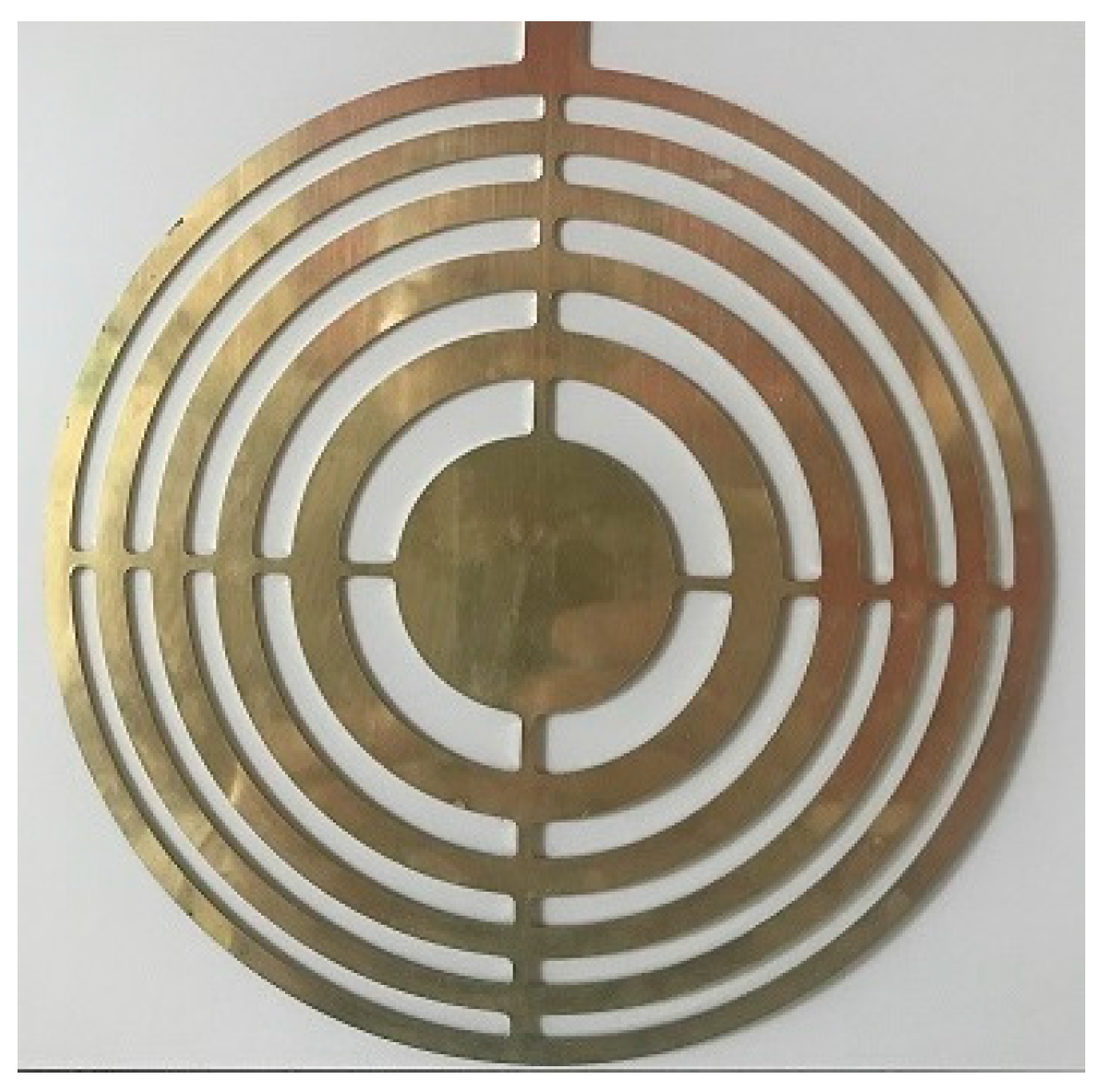

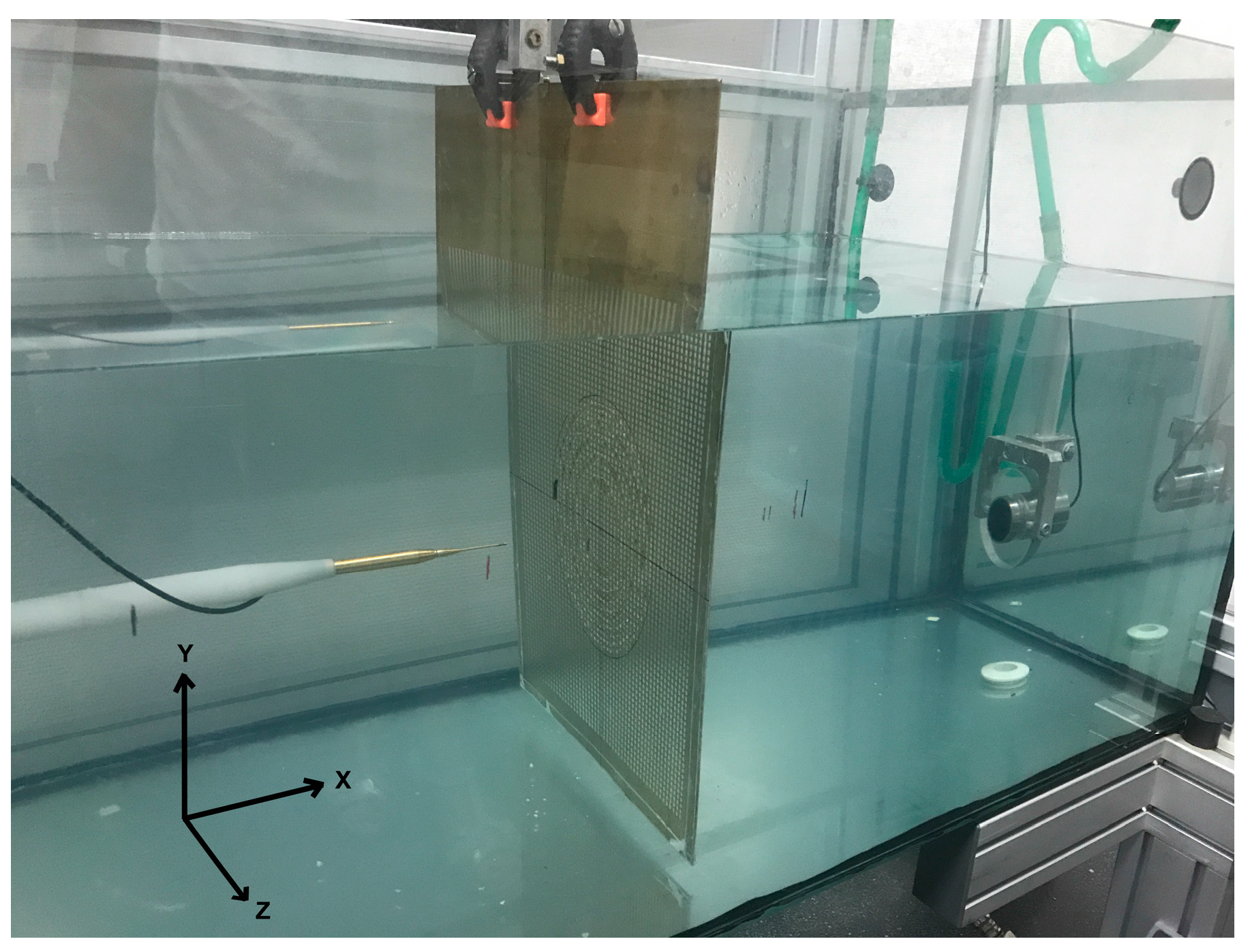
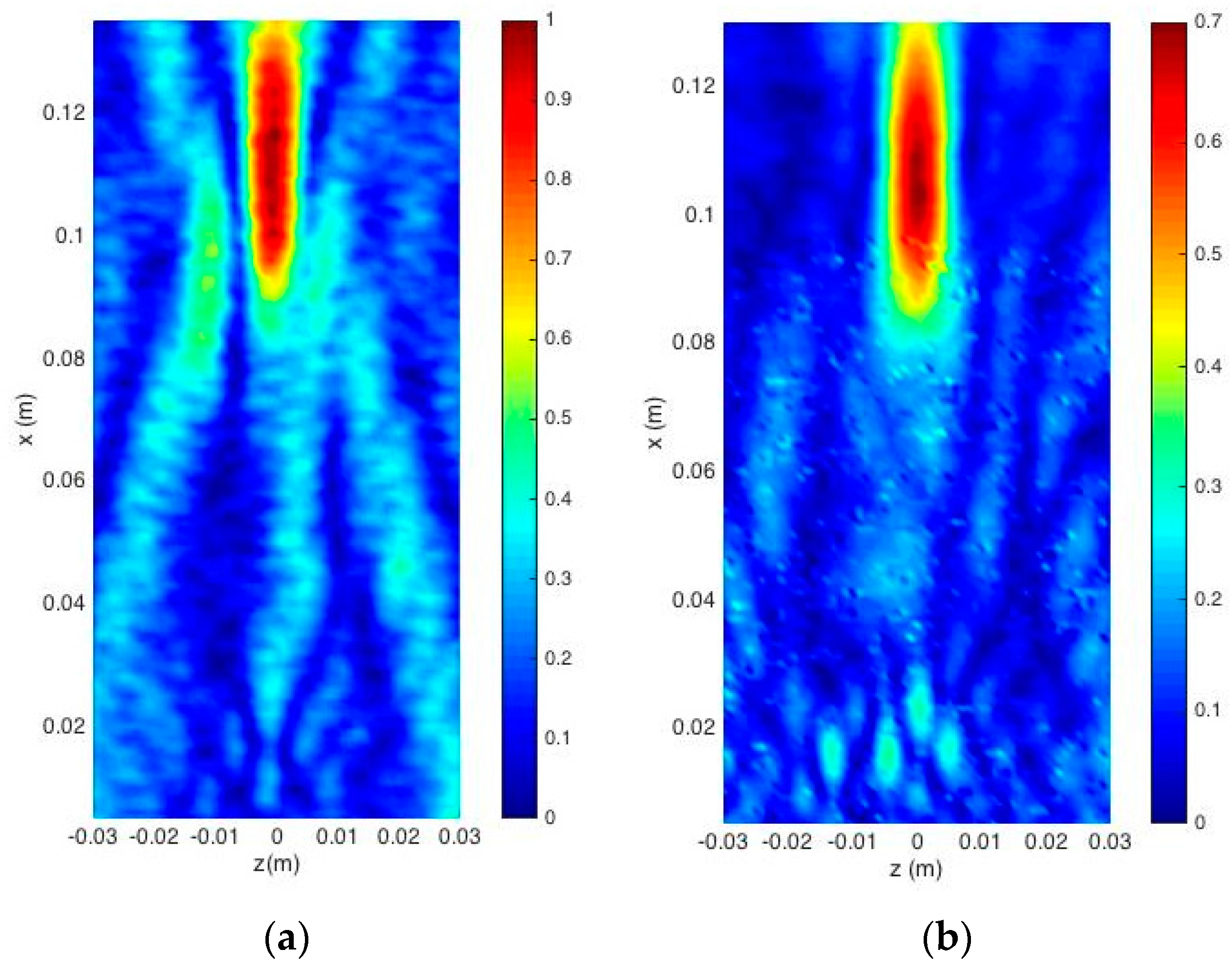
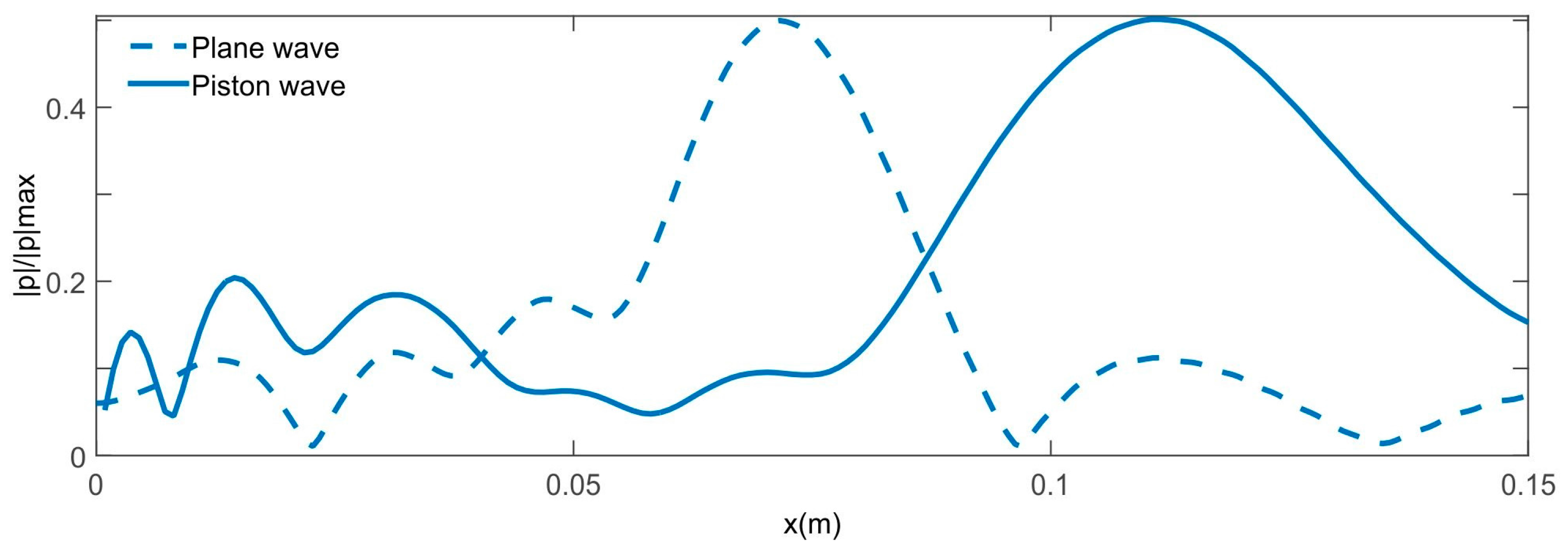
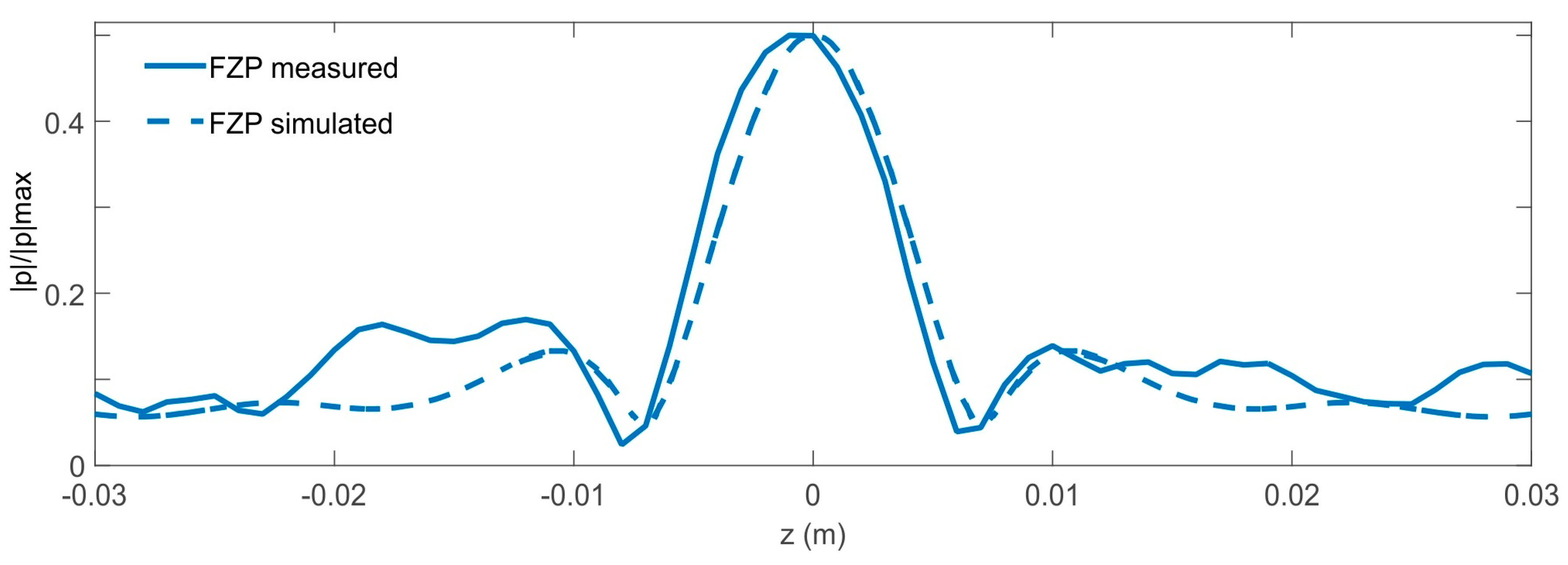
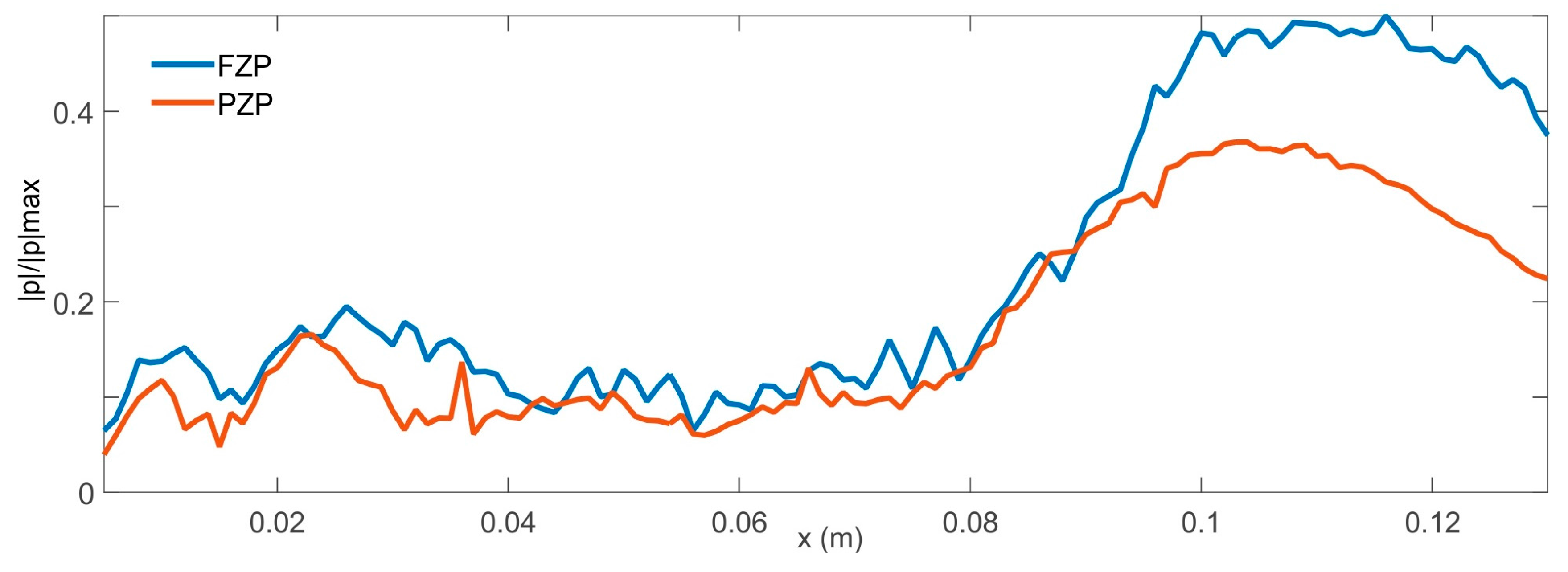
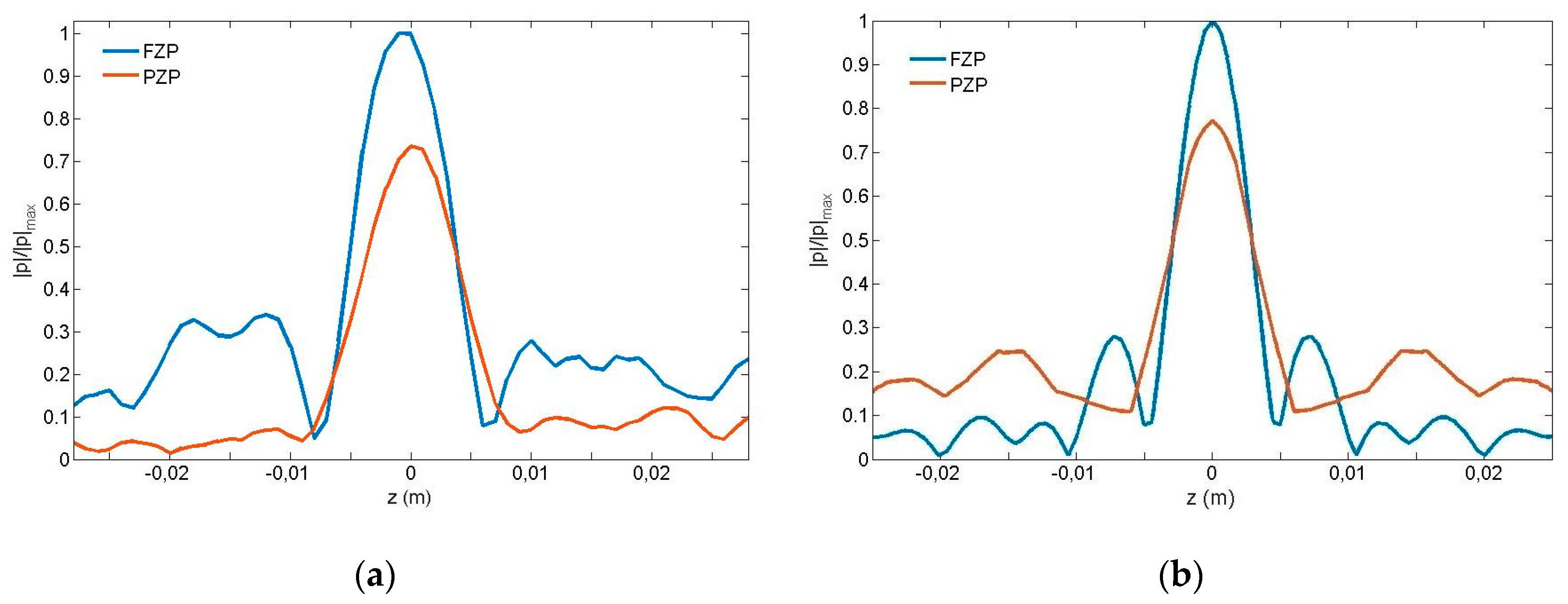
© 2017 by the authors. Licensee MDPI, Basel, Switzerland. This article is an open access article distributed under the terms and conditions of the Creative Commons Attribution (CC BY) license (http://creativecommons.org/licenses/by/4.0/).
Share and Cite
Rubio, C.; Fuster, J.M.; Castiñeira-Ibáñez, S.; Uris, A.; Belmar, F.; Candelas, P. Pinhole Zone Plate Lens for Ultrasound Focusing. Sensors 2017, 17, 1690. https://doi.org/10.3390/s17071690
Rubio C, Fuster JM, Castiñeira-Ibáñez S, Uris A, Belmar F, Candelas P. Pinhole Zone Plate Lens for Ultrasound Focusing. Sensors. 2017; 17(7):1690. https://doi.org/10.3390/s17071690
Chicago/Turabian StyleRubio, Constanza, José Miguel Fuster, Sergio Castiñeira-Ibáñez, Antonio Uris, Francisco Belmar, and Pilar Candelas. 2017. "Pinhole Zone Plate Lens for Ultrasound Focusing" Sensors 17, no. 7: 1690. https://doi.org/10.3390/s17071690




